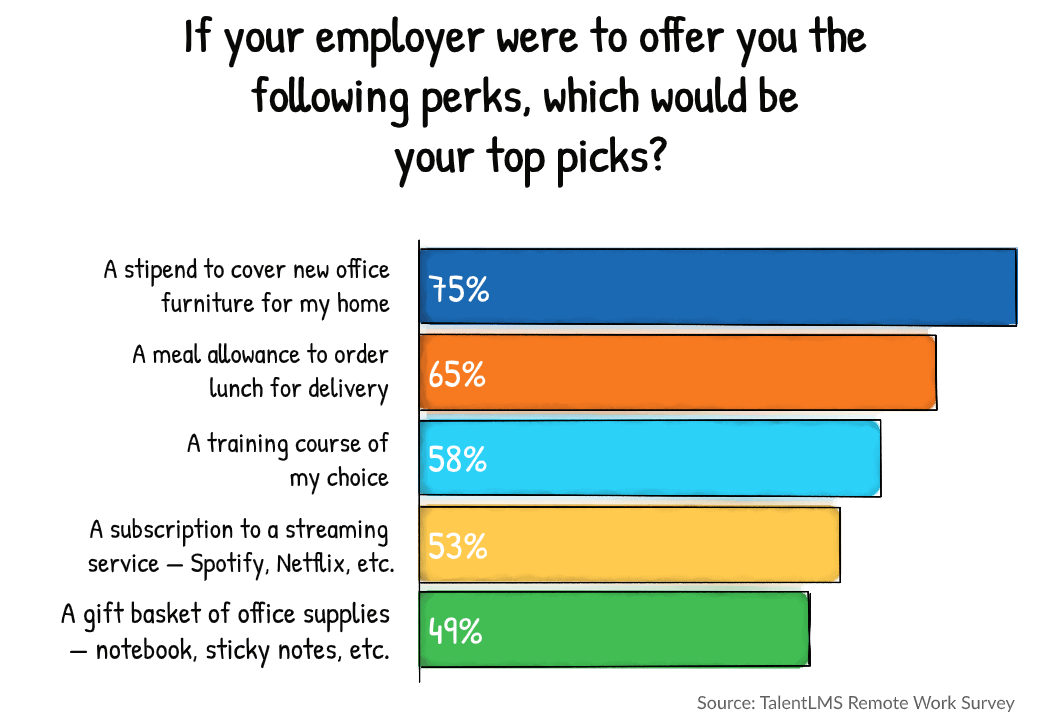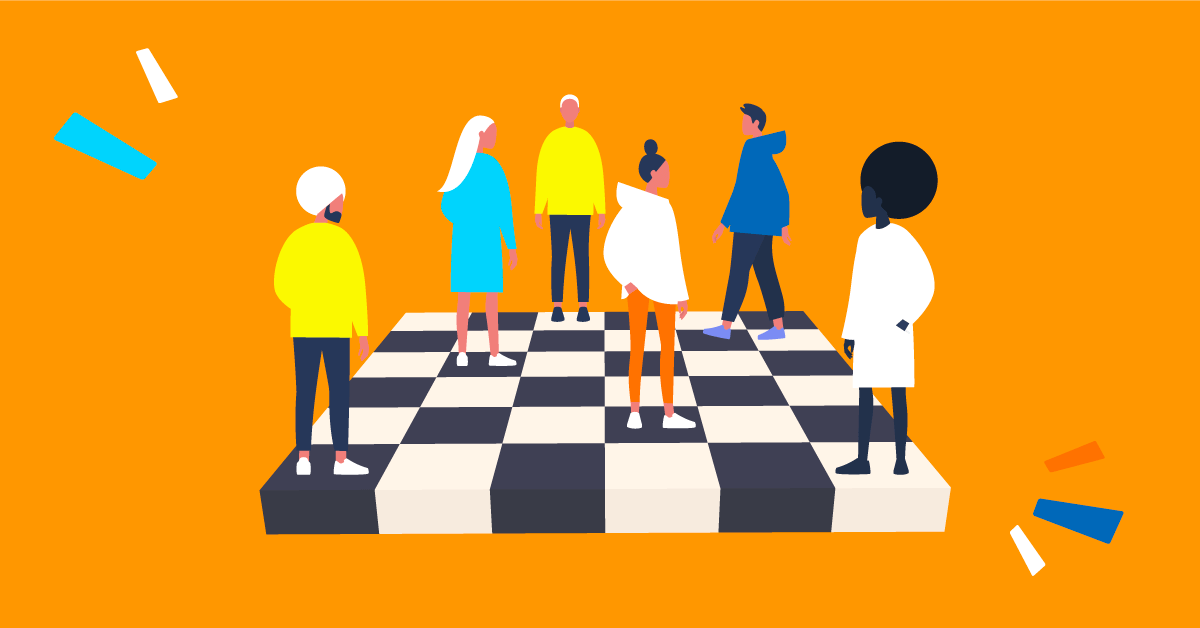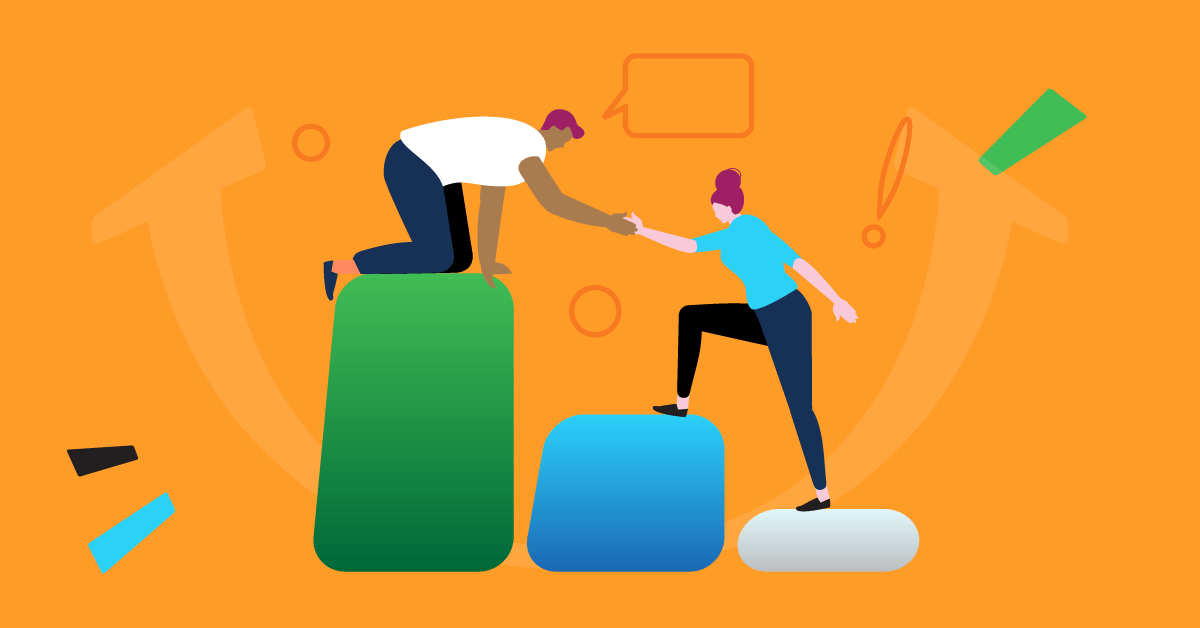- Mental health: Let’s call it by its name
- … but remove the stigma
- “Mens sana in corpore sano”
- Well-being at work doesn’t come naturally; we need to learn “how to”
- Employee well-being from a distance
- Humor can go a long way
- After all, there’s no “one-size-fits-all” employee well-being plan
- Post-pandemic: Do employee well-being programs come with an expiration date?
One day in 2020, a company asked its employees to not show up in the office the next day, and, instead, work from home for “as long as it takes.” Little did they know it would take them months to return to the office — if ever. And business would never be “as usual.”
Employee burnout, low morale, work-life (im)balance. These were not just buzzwords anymore. And well-being at work was no more a nice-to-have or a perk to promote your open roles.
The recent pandemic has taken an emotional toll on employees. With mandated lockdowns and nowhere to go, people ended up working long hours. At the same time, they were struggling to juggle between work and home life. The overall stress, a result of this healthcare crisis, has a long-term impact on their mental health, too.
Luckily, many companies have taken note and introduced initiatives to take care of their people. But also to remind employees to take care of themselves. Because mental health impacts us in all aspects of our lives. Employees, now more than ever, expect to find well-being at work.
A recent study on remote work and employee wellness from Virtual Vocations found that 77.64% of respondents feel that overall health, including mental and physical health, is extremely important to work success. Plus, more than 42% consider access to fitness classes, like yoga and Pilates, their most desired employer-provided wellness benefit. However, only 5.65% said their current employers offer access to such benefits.
This is a good starting point if you’re thinking about introducing some employee well-being benefits. But it’s not the only way to go. Twenty-three companies are sharing how they promote well-being at work and what kind of initiatives they’ve taken to battle mental health issues, especially amid the pandemic.
Mental health: Let’s call it by its name
What’s the first thing that comes to mind when hearing the phrase “employee well-being”? Flexible working hours? Yoga sessions? A relaxing work environment with ping pong tables? This is all fair game. But if we really want to invest in and support employees’ mental health, we need to take more decisive measures.
First, we shouldn’t sugarcoat mental health issues. Terms like “workplace happiness” don’t necessarily represent employees’ needs. If we truly want to help our people, we need to recognize — and help them recognize, as well — their real struggles, e.g., burnout or low morale.
Secondly, we should help them battle these issues. And this is where HR can make a difference. Christina Gialleli, People Operations Director at Epignosis, explains how they decided to invest in workplace wellness benefits.
“Particularly during the second wave of the pandemic, we noticed that people were stressed over various things — it didn’t necessarily have to do with their work or productivity. We knew that sharing tips on how to effectively work from home or sending reminders to go for a walk and take some fresh air, wouldn’t cut it.”
Christina says it was clear they needed to do something more impactful, something that would boost people’s mental health. And that’s when the idea of offering access to a consulting phone line where employees can seek advice and support from qualified psychologists came up:
“We wanted to offer our people the option to seek psychological support, even if they weren’t ready or didn’t need to go to therapy. The consulting phone line lets people choose when and how frequently they’ll discuss issues they’re facing.”
Tom Winter, HR Tech Recruitment Advisor & Co-founder of DevSkiller, also highlights it’s important to take care of not just your physical but your mental health, too. That’s why, ever since the pandemic outbreak, they let their employees take some days off whenever they feel physically or mentally fatigued, so they can avoid burnout in the future.
“Employees are returning much more enthusiastic and willing to openly speak about their mental health, which has resulted in a much healthier work environment,” Tom says.
Along the same lines, Absolute Digital Media has introduced three extra wellness days off per year. If a team member is feeling demotivated or needs some extra time to recharge, they can take a wellness day to prioritize mental health.
For Zoë Morris, President at Nelson Frank, well-being at work is not a one-off event. Every Wednesday, employees are asked to close their laptops an hour early and do something for themselves. Whether that’s spending time with a book, their family, or heading out for a run, the time is theirs to do whatever makes them happy.
“[Well-being Wednesday] has been one of the most popular benefits we’ve introduced to the company and has gone from a lockdown experiment to help people switch off when working from home, to a permanent fixture that will remain in place going forward. Happier, relaxed people make better, focused employees, so it’s no surprise to us that it’s resulted in a far more engaged workforce.”
… but remove the stigma
While it’s important to steer away from a “toxic positivity” mentality, it’s equally important to understand that people aren’t always comfortable sharing their mental health struggles. Especially in a work environment. For example, employees may worry that disclosing they’re experiencing burnout, could have a negative impact on their job.
This is why it’s important to create a safe space where no one is stigmatized. At Asana, wellness benefits are intentionally designed to support people in whatever ways they need, through awareness, healthy practices, skill-building, and 1:1 and group support.
“Our Real Talk event series encourages authentic discussions on issues that are important to various communities. These are conversations where we create safe spaces to be open, honest, and authentic, while sharing experiences, sparking moments of insight, listening, and reflecting,” Jennifer Shenker, Head of People Rewards, Analytics and Operations, says.
“At Asana, we truly believe in helping people thrive, and part of thriving is supporting mental well-being.”
And they’ve truly adopted this mindset by introducing Thrive; a safe, stigma-free space where Asanas can share thoughts, feelings, experiences, and resources related to mental health and well-being. Through this internal community, employees navigate their own mental health, as well as create allies supporting others with their mental health.
It’s also important for senior management to step in and help remove the stigma from mental health issues at work. Exactly what Alex Iwanchuk, Co-founder of Feals, is trying to achieve. “When I need a mental health day, I take the time — and I let my team know. When that comes from the top [of an organization], you can see the ripple effect. It’s really about leading by example and sharing experiences.”
Alex notes that team members have started opening up about their well-being-related needs, and, as a result, everyone supports and empowers each other.
Another example comes from PrizeRebel. Jerry Han, the company’s CMO, explains that anyone on the team can take “Me days” whenever they feel the need to take a day off to work on their well-being and improve their mental health. “There doesn’t need to be an explanation of why a “Me day” is needed and is not counted from sick days or vacation days,” Jerry adds.
Sonya Schwartz, Founder of Her Norm, reminds us of another reason why people may hesitate to seek help when it comes to their well-being. “A consultation with a mental health expert is often costly.” To encourage employees to discuss and overcome their mental health issues, Sonya has included mental health consultations in insurance packages. Mental health should no longer be taboo — it’s a way to take care of yourself as a whole.

“Mens sana in corpore sano”
It’s been known for hundreds and hundreds of years: “A healthy mind in a healthy body.” Many companies have adopted this mindset, offering virtual fitness classes during the pandemic to improve employee well-being.
But how do employees respond?
Thomas Fultz, Owner at Coffeeble, describes how meditation has helped the team during these times. They started with a 30-day program through the Calm app and continued with a daily 30-minute break for meditation and self-care. In fact, this initiative helped so much, that Thomas is in the process of hiring a wellness coach.
At WritingUniverse, employees are encouraged to participate in fitness activities, like yoga and walking challenges, by getting rewards. “We noticed that adding an element of competition made employees more interested in the initiatives. They were better able to manage their work/life balance and we had fewer cases of burnout and a decrease in absenteeism,” Mark Blackwood, HR Manager, explains.
Online fitness classes have an indirect impact on employee well-being, too; it’s a chance to meet and bond with your colleagues, even from afar. This is why Ouriel Lemmel, CEO and Founder of WinIt, has decided to stay at the Zoom meeting for another 20 minutes after their online yoga class, just in case anyone wants to chat.
“I want this post-workout time to have the same feeling as chatting after a workout class in person. It isn’t time to talk about work, just time for those who want to hang out and get to know each other. It can be especially hard in a remote work environment to have a pulse on how my employees are doing and having this chat after a yoga class has made all the difference.”
Well-being at work doesn’t come naturally; we need to learn “how to”
Just because terms like “well-being” and “mental health” are so popular these days, doesn’t mean we’re all supposed to know what to do. Luckily, there are plenty of training resources or apps and ready-made courses that can benefit both employers and employees.
Employees at QuizBreaker, for example, get access to a variety of in-person and online classes, ranging in topics from fitness to cooking and diet/nutrition. While Dentaly has created a mental health toolkit that includes a curated list of online resources and links to support groups and employee assistance programs.
At Asana, every new employee goes through Conscious Leadership (CLG) training. CLG offers frameworks, concepts, language, and practices to get unstuck from unhelpful mindsets and move through conflict. It’s all about mindfully transforming emotions, thoughts, and communication styles to enable self-awareness, self-acceptance, and greater, authentic connections with one another. Employees get also six executive coaching sessions per year so they work on professional effectiveness, broader well-being, and personal development.
Ian Sells, founder and CEO of RebateKey, took the initiative of organizing group sessions on several topics, like coping strategies, mindfulness, and so on. “We held classes like this to ensure that our employees’ mental health is kept in check. Employees say that these programs helped them not only with work but with life in general,” he adds.
MaryBeth Hyland, Founder & Chief Visionary of SparkVision, describes how “Mindful Minutes”, sessions, work: “We offer twice-weekly, 15-minute live mindfulness coaching sessions that take one tip or practice to put into action in real-time. They range from guided meditations, breathwork, boundary setting, mindset, and values-alignment. By making the sessions short and direct, we’ve been able to provided participants with dynamic new tools to support their well-being.”
Among other initiatives, two employees at SoftwareKeep are currently taking different mental health paid courses. According to CEO Ronnie Teja, once they’re done with learning, they expect to create a team that can look after each other.
If you’re thinking to offer mental health training to your teams but don’t know where to start from, a good place is an online library with ready-made resources and courses. TalentLibrary™, for example, has an entire collection of courses on well-being and mental health, from eating healthily and dealing with stress to understanding emotions and kicking bad habits.
Gina Lionatos, Brand Marketing Manager at TalentLMS, shares below some quick tips on how to create a mindfulness training program—whether it’s for individuals or teams:

Meet TalentLibrary™
A growing collection of ready-made courses that cover the soft skills
your teams need for success at work![]()

Employee well-being from a distance
One of the main reasons why employees’ mental health took a hit these past few months was the sudden transition to remote work. Companies that had built a nice office space had to quickly find new ways to replicate that environment for their remote employees and boost their motivation even from afar.
And employees, on their part, expect companies to adapt to the new work situation and provide meaningful benefits. A recent TalentLMS survey on remote work revealed that 75% of remote employees would prefer their employers offered a stipend to cover home office furniture.
Companies have been working in that direction. Tidio, for example, gives its people a budget for a home-office setup.
Resume.io has also decided to subsidize the cost of any home office-related expenses to help their people create a workspace that is conducive to being productive from home. “We don’t want to lose our top talent during this time of flux and the fact that people know we have their back when it comes to comfort and flexibility makes them appreciate more that they work for a company that wants to make their lives easier,” says Rolf Bax, the company’s Chief Human Resources Officer.
Ant & Garden Pest Control has taken a different approach. They provide remote employees with Spotify and Netflix subscriptions to help promote relaxation and prevent burnout. That’s in line with the results of the same survey, where more than half of the respondents said they’d like to get a subscription to a streaming service as a benefit from their employer.
Understandably, not every company can afford to buy for their people home office furniture or pay for their Netflix subscriptions in the long run. There are, though, smaller but equally thoughtful gifts that can serve as mood boosters.
Absolute Digital Media sends its employees “care packages”. From everyone’s favorite office snacks to a self-care pamper box, these packages have a personal touch and remind employees they’re still part of a wider team.
A similar idea comes from Rent to Own Labs. Employees are gifted with aromatherapy candles to add a layer of peace and warmth to their lives — and eliminate stress.
Humor can go a long way
While mental health struggles are tough, some lighthearted activities can still boost employee well-being at work. Ioanna Proestaki, People Operations Specialist at Epignosis, says that among the most popular initiatives was an online stand-up comedy session.
“People would send me messages afterward saying how much they laughed during the event, and how much they needed that. It’s true. When things get tough, we tend to forget to “have fun”, so this was a reminder for all of us and it was nice we shared that together.”
On the same note, Duradry.com has found that trivia games are a great team-building activity and a way to disassociate the workplace from just a place with looming deadlines and tight schedules. “We typically like to host these trivia quiz events first thing on a Monday morning. This helps to get each week off to a positive start,” says founder Jack Benzaquen.
Plus, engaging team activities promote inclusion. “When you have a diverse team, everyone can bring something a little different to the table with their unique perspectives and interests.”
After all, there’s no “one-size-fits-all” employee well-being plan
Some of these well-being activities may be common, while others are unique. Some may be simple, others require more time or resources to be organized. And some will work for you and your teams, while others won’t.
One thing is for sure, though: there’s no one magic solution for well-being at work.
Elisabeth Duncan, VP of HR at Evive, agrees that adopting a more personalized approach can be effective. “We realized that sharing information in “all company” emails is not relevant to everyone. We encourage HR to use a personalized messaging platform that informs employees about benefits they can use, gently nudges them to act or make an appointment to get the support they need, and provides information specific to their location.”
Employees at MyPerfectResume also get access to a wellness platform where they get personalized care and support in different areas, e.g., stress & anxiety, burnout, parenting, work performance, relationships, etc.
“The pandemic has shown us that even top-performing employees can reduce their productivity due to burnout. Our goal is not only to help our employees deal with their mental health issues but to prevent these from happening in the first place,” says HR Manager Jessica Lim.
Post-pandemic: Do employee well-being programs come with an expiration date?
The pandemic might have been what pushed us to think about employee well-being even more, but if we see it as an opportunity, mental health will become a priority in the long run. And it’s not just because happy employees increase productivity.
But because it’s a chance to truly benefit the community and our people. Empowered, healthy people are more creative, more innovative, and better equipped to tackle whatever the future may hold.
| Tags: Employee Engagement




